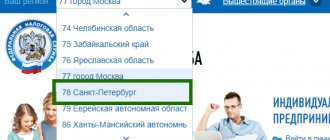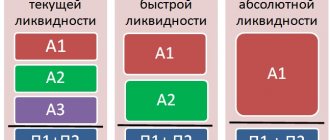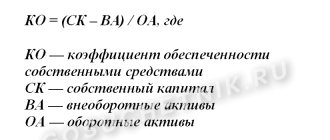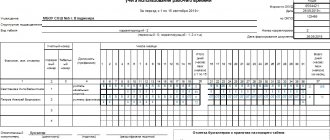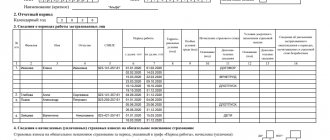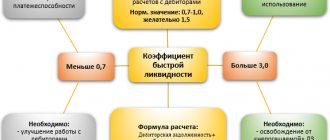BLITZ! K1 is a federal coefficient, updated annually. The value for 2022 is 2.005 . K2 is a regional coefficient; it needs to be clarified with local governments; it is different for each region. It depends both on your region (sometimes even on the municipal area) and on the type of activity you are engaged in.
Before finally choosing any tax regime, novice entrepreneurs, and even those who simply decided to switch from one tax scheme to another, should first thoroughly study the features of each of the taxation systems operating in Russia, since all of them have their own subtleties and nuances. UTII is no exception. For example, when calculating the single tax on imputed income, an accountant must take into account the special adjustment coefficients K1 and K2.
Coefficient K1: what is it and what is it for?
The correction coefficient K1 or, as it is also called in professional language, the deflator coefficient displays the amount of inflation. It is established for a period of one year and is subject to application throughout the Russian Federation.
According to the law, the Ministry of Economic Development of Russia is responsible for calculating the K1 coefficient, and by special order it is obliged to publish its value for the next year, no later than November 20 of the current year. If this procedure was not carried out, then last year’s values are automatically extended.
The essence of calculating the K1 coefficient is quite simple: the coefficient for the past year is multiplied by the coefficient for the coming year. True, the preliminary work is much more complicated: ministerial workers have to conduct a thorough analysis of the cost of the consumer basket and its changes during the year. As practicing accountants note, K1 grows every year, which in general is not surprising, since prices for goods and services also increase from year to year.
It’s better to show the calculation
If the K2 coefficient, based on the legislative act of local authorities, consists of several sub-coefficients, then this is already a reason to show the inspectors its calculation. This way you can avoid at least unnecessary tax questions. Moreover, the calculation algorithm proposed by the Ministry of Finance will be useful for taxpayers selling several groups of goods, if each of them has its own sub-coefficient. In this case, the recommendation of the Russian Ministry of Finance will also serve as a powerful argument in favor of the correctness of the chosen calculation method. If desired, you can also attach the letter from the financial department itself to the calculation of the final K2 coefficient. The main thing is not to forget that the calculated coefficient cannot be lower than 0.005 (clause 6 of Article 346.29 of the Tax Code of the Russian Federation).
Tax reporting consultant E.P. Sochi
Tax base: basic profitability and physical indicators
When calculating the Unified Tax on imputed income, regulators take into account the basic profitability for a particular type of activity. Basic yield is an estimated monthly income corresponding to some specific physical indicator. In turn, the unit of physical indicator can be:
- individual entrepreneurs and employees,
- shopping places,
- vehicles (cars and others),
- area of retail premises, i.e. square meters.
To make it clearer, let’s give examples: for veterinary and household services, the physical indicator will be the number of employees, for grocery chains - square meters, for transport enterprises, in turn, the number of cars involved in work, etc.
Tax base = basic profitability x physical indicators.
A separate material contains a table of the values of basic profitability and physical indicators depending on the type of business activity.
Important! It happens that during the tax period there is a change in the value of a physical indicator. In such a situation, this change must be taken into account to calculate the amount of UTII from the beginning of the month in which it occurred.
The physical indicator and basic profitability of each type of activity falling under UTII are established in the corresponding article of the Tax Code of the Russian Federation.
ATTENTION! It is the basic profitability that needs to be adjusted by the coefficients K1 and K2. Thanks to these coefficients, it is possible to take into account the influence of external factors on the profit received by businessmen.
By the way, since the basic income is calculated based on a monthly period, then when determining the tax base, which for UTII, as is known, is equal to a quarter, it must be increased three times (i.e. by three calendar months).
EXAMPLE OF CALCULATION
Let's compare how the tax burden of UTII payers will change with an increase in the K1 indicator. Let’s imagine that an individual entrepreneur provides shoe repair services and has 2 shoemakers working for him. The basic profitability of its activities (“household services”) per month, according to the Tax Code of the Russian Federation, will be 7,500 rubles. Let K2 be equal to 1 in a given region, and the maximum tax rate is 15%. For simplicity of calculations, we will assume that the entrepreneur does not enjoy benefits for compensation for paying insurance premiums.
Let's calculate what tax an individual entrepreneur must pay for the 1st quarter of 2018, when the K1 indicator of last year is still in effect - 1.798. First, let's calculate the tax base: (7500 × 1 × 1.798 × (2 + 2 + 2 (persons)) × 3 = 242,730 rubles. Multiply it by the tax rate: 242,730 x 15% = 36,409 rubles (with rounding, as required by the Tax Code of the Russian Federation).
Now let's see how this indicator changes with the growth of K1 to 1.868 - let's calculate the amount of UTII payment for the 2nd quarter. The tax base will be (7500 × 1 × 1.868 × (2 + 2 + 2 (persons)) × 3 = 252,180 rubles. We take 15% of this amount: 252,180 x 15% = 37,827 rubles.
Thus, the quarterly payment will increase by 1,418 rubles, and at the end of 2022, this individual entrepreneur will have to pay approximately 4,254 rubles more than before.
How to calculate UTII tax for individual entrepreneurs in 2022
Payment period. The tax amount you calculate must be paid by the 25th of the first month after the end of the tax period. If the last day of payment falls on a weekend, transfer the money to the budget on the next closest working day. Payment deadlines in 2022:
- 1st quarter - until April 27;
- 2nd quarter - until July 27;
- 3rd quarter - until October 26.
Based on the results of 2022, UTII must be paid by January 25, 2021.
Payment details. You can pay tax only using the details of the tax service of the region where you operate. In this case, you must be registered as an imputation taxpayer. There are types of activities to which these standards do not apply:
- delivery and distribution trade;
- advertising in transport;
- passenger and cargo transportation.
Individual entrepreneurs engaged in these types of activities pay tax from the place where the main office of the enterprise is located, since the exact address of the activity is impossible to determine.
Liability for non-payment. If the tax was not paid on time, the individual entrepreneur will be held accountable. It could be:
- collection of tax shortfalls;
- a fine of 20% of the debt amount if the payment was not made by the payer unintentionally;
- a fine of 40% of the debt amount if non-payment of tax was intentional;
- For each day of delay, a penalty is charged.
Coefficient K2: conditions and its features
This coefficient, which is also a correction coefficient, unlike K1, takes into account many external factors that can in one way or another affect the business activities of an enterprise or individual entrepreneur working on UTII.
These factors include:
- operating hours of an organization or individual entrepreneur;
- seasonality;
- employee salaries;
- range of goods, services and work performed;
- profitability;
- specific place (address, area) of commercial activity;
- the area of advertising and information fields used and their type;
- other factors.
The above conditions, which are taken into account by the K2 coefficient, are not limited in any way, so the list can be continued.
This is due to the fact that K2 is established in each region individually by representative bodies of city districts, municipal districts, etc. taking into account the characteristics of these territories.
By the way, according to the law, regions may not set this reduction factor, but, as a rule, local authorities still accommodate representatives of small and medium-sized businesses, who mainly work on UTII.
FOR YOUR INFORMATION! The correction factor K2 is considered reducing. Its role is to equalize traders working in different conditions.
For example, this is important for those who do business not in big cities, but in small villages and towns. This coefficient is developed by local authorities and depends on the economic situation in the region. Moreover, representatives of the business community have the right to influence the size of the coefficient through direct appeal to municipal authorities.
This coefficient can be equal to 1, if there are no plans to apply a reduction, or it can be less than 1, then in the tax calculation formula it will turn out to be preferential. If the exact size of K2 for your region has not yet been clarified, and you need to make a preliminary calculation of UTII, it is better to calculate K2 equal to 1. The minimum value of the K2 coefficient is 0.005.
ATTENTION! Coefficients K1 and K2 are established for one year and are subject to annual recalculation.
If the interested authorities establish the value of K2 in all details, then this is very convenient for taxpayers. Otherwise, when municipalities regulate only its individual components, tax entities have to independently calculate the final size of this coefficient by multiplying its established values.
Examples of calculations of the single tax on imputed income
Below are tax calculations for different types of activities.
An example of calculating UTII for the transportation of goods
The organization operates to provide motor transport services for the transportation of goods by 3 vehicles.
| Business activity code | 05 |
| Basic income per month (RUB) | 6000 |
| The value of the physical indicator (number of vehicles used to transport goods) | 3 |
| K1 coefficient for 2022 | 1,868 |
| K2 coefficient | 1,0 |
| Paid insurance premiums for employees | 27 000 |
Tax base for the month = DB*FP*K1*K2= 6,000 rubles. x 3 mash. x 1,868 x 1= 33,624 rub.
Tax base for the quarter = RUB 33,624. x 3 months = 100,872 rub.
UTII for the quarter = 100,872*15% = 15,131 rubles.
The amount of insurance premiums paid in the reporting period for employees engaged in business activities for which a single tax is paid amounted to 27,000 rubles. Thus, the calculated single tax can be reduced by insurance premiums paid, but not less than 50% of the total tax amount.
The amount of contributions by which UTII can be reduced for the quarter was 7,565 rubles. (RUB 15,131 x 50% < RUB 27,000).
Thus, the amount of UTII payable for the quarter will be 7,565 rubles. (RUB 15,131 – RUB 7,565).
If an organization registered as a UTII payer on the 10th day of the second month of the quarter, then the tax base for the quarter will be calculated as follows:
- 1 month of the quarter – 0 rub.;
- 2nd month of the quarter – 23,537 rubles. (RUB 6,000 x 3 cars x 1,868 x 1/30 days x 21 days);
- 3rd month of the quarter – RUB 33,624. (RUB 6,000 x 3 cars x 1,868 x 1/31 days x 31 days).
Reasons for adjusting the K2 coefficient
Under some circumstances, the value of the K2 coefficient for some specific enterprises or individual entrepreneurs may be changed. In particular, this is possible if:
- the work of the enterprise or individual entrepreneur was carried out for less than the tax period (for example, only two months out of three quarterly months). Moreover, if such an adjustment is not specified in local legislative norms, this cannot serve as a basis for its cancellation;
- the company’s activities did not occur every day, for example, due to sanitary days and weekends, or according to a schedule approved within the organization;
- there was a forced suspension of activities caused by objective reasons. These include force majeure, cases of accidents and repair work, temporary disability of employees, suspension of activities by court decision, etc.
To ensure that tax officials do not suspect a desire to evade paying taxes, these facts must be supported by relevant documents.
IMPORTANT! If for some time an individual entrepreneur or an enterprise located on UTII for some reason did not have contracts and transactions, but, nevertheless, actually carried out commercial activities, then this cannot serve as a legal basis for non-payment of the Unified Tax on imputed income.
In other words, if there are no valid explanations for the lack of income, you will still have to pay this tax.
How to determine K2
In accordance with paragraph 3 of paragraph 3 of Art. 346.26, paragraph 6 of Art. 346.29 of the Tax Code of the Russian Federation K 2 is established by representative bodies of municipal districts, city districts, legislative (representative) bodies of state power of federal cities of Moscow and St. Petersburg.
At the same time, local representative bodies must have time to approve the value of K2 before the start of the new calendar year. If the act approving the new value of K2 did not have time to come into force in accordance with current legislation, then in the new year the K2 that was applied in the previous year will be in force (Letter of the Ministry of Finance of Russia dated July 14, 2011 N 03-11-06/3/82 ).
Example:
The local legislative assembly of the city district in November of this year approved the K 2 value for vehicle storage activities in the amount of 0.8 for the next calendar year. The decision to set the value of K 2 for the new year was published on December 7.
However, according to the norms of paragraphs 1, 5 of Art. 5 of the Tax Code of the Russian Federation, this Decision cannot come into force on January 1 of the next year, since it was published less than one month before the start of the tax period (Letters of the Ministry of Finance of Russia dated 04/23/2008 N 03-11-03/07, dated 02/20/2008 N 03-11-04/3/80).
Therefore, in the next calendar year in the city district, the same K 2 that is in effect in the current year should be applied to the storage of motor vehicles.
